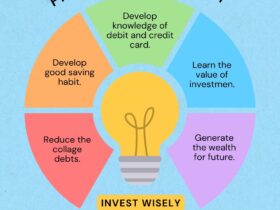Current and future challenges and opportunities in Tanzania.
Poverty and inequality: High growth, but not for all.
Tanzania has been a macro-economic success story for nearly two decades. The rate of economic growth increased from 3.5 pct. in the 1990s to 7 pct. in the 2000s. Despite the global financial crisis, growth rates have been remarkably stable over the last decade, and they are expected to continue or even increase in the foreseeable future. At the same time, the country has experienced high population growth – from 11 million people in 1963 to around 45 million in 2012. Population growth remains high, at nearly 3 pct. annually. If this growth rate continues, there will be 53 million Tanzanians in 2018 and 100 million in 2042.
Economic growth and decades of massive international aid have created many good results, but it is important to recall that the growth began from a very low starting point and that poverty in Tanzania has proven extremely stubborn.
The modest reduction in poverty illustrates that economic growth has not been sufficiently broad-based. Growth is concentrated in telecommunications, financial services, retail trade, mining, tourism, construction and manufacturing. While growth was formerly driven largely by public spending and international aid, this is no longer the case. Growth today is generated mainly by the private sector, but the sectors with the highest rates of growth are predominantly capital-intensive and concentrated in large urban areas.
One major cause for the lack of poverty reduction despite economic growth is that Tanzania has not succeeded in raising productivity in agriculture over the last decades. Tanzania remains predominantly agricultural, with three quarters of the population living in rural areas. Eighty percent of Tanzania’s poor live in rural households. Growth in the agricultural sector remains low, at around 4% per year, and in the rural areas the growth in productivity can barely keep up with population growth. The birth rates in rural areas are high (6.1 births per woman compared to 3.7 in the urban areas).
While donors and the government have used significant resources to improve the social sectors, similar necessary support has not been given to agriculture and other productive sectors. Lack of secure land tenure to ensure that the traditional users in the rural districts do not lose their land is one of the most essential issues, constraining investments that could enhance productivity.
For the same reason, Tanzania is experiencing significant out-migration of young people from low productivity agriculture to urban informal service sectors, where productivity is just as low. Unemployment is high and growing rapidly, especially in the urban areas and among youth.
With the recent discoveries of significant gas reserves in addition to its already large mineral resources, Tanzania’s long-term economic prospects appear promising, and these resources have already attracted foreign investors. However, the benefits to be derived from the exploitation of natural resources will not significantly materialize for another 10 years or so, and it is crucial to ensure macroeconomic management. In recent years, the Government has increased its use of both interest-bearing and low interest concessional borrowing.
Social development.
Poverty cannot be measured simply by examining income distribution and distribution of assets alone. The official statistics focus only on private consumption and therefore underestimate the importance of consumption of public goods. The statistics thus underestimate the improvements achieved in recent years. The Tanzanian government has chosen to spend significant resources on provision of public goods to the population.
Tanzania has placed special emphasis on education, and great improvements have been made in the population’s access to primary education. Today, Tanzania is one of the few low-income countries that are close to achieving universal primary education. Progress has also been made in efforts to reduce inequalities between girls and boys in access to education and in the struggle against HIV/AIDS, malaria and several other diseases. In the health sector, general success has been achieved in extending access to basic health services, and the results can be seen in the increasing number of children who survive.
Across all social sectors, there are major and sustained needs to increase the quality of services offered. The massive expansion of coverage and the attempt to reach out to everyone with education and health services, has reduced the quality of services across the board.
The quality of primary health care has been negatively affected by a range of factors, including shortage and poor distribution of health workers, poor access to essential medicines and poor infrastructure. This situation is further affected by the rapidly growing population.
Good governance, public sector capacity and problems with corruption.
In terms of good governance, Tanzania achieves average scores in global rankings. One sign of progress is that citizens are beginning to demand more insight and influence than previously. Citizens, parliament, media and civil society are increasingly demanding that the government act responsibly, and that it be accountable to the population. Tanzania has also recently seen improvements in budget transparency and people’s access to information, but the political environment continues to be dominated by a top-down approach.
The government is constantly challenged on issues of effectiveness and rule of law, and the fight against corruption continues to be one of Tanzania’s major challenges.
Decades of reforms in the public sector have resulted in Tanzania scoring relatively better than most other African countries on Public Financial Management (PFM). A wide range of laws, regulatory bodies and systems have been enacted and implemented over the last 15 years. Procurement regulation is of international standard, but it continues to be a challenge to ensure compliance with these standards. Public budgets have become more transparent and open, but the citizens’ active engagement in these issues continues to be modest.
Over the past decade, the government has been successful in increasing tax revenues, partly through more effective tax administration. Collections correspond to almost 18% of GDP, which is high by African standards. A challenge for the future is to revise tax policies so that the tax burden is distributed more broadly in society. Of particular concern is the large amount of tax exemptions, which is estimated to cause annual losses of almost 4% of GDP. In addition, the complex and non-transparent system of exemptions contributes to corruption.
Corruption remains a central and serious challenge for Tanzania, in terms of both good governance and for the entire social development. The levels of petty and grand corruption identified in international and domestic surveys continue to be of considerable concern and affect all sectors of the economy from public service delivery to natural resource exploitation, industrial production and business. The formal anti-corruption legislation and anti-corruption institutions in Tanzania are comparable to those of most other African countries.
Natural resources management.
Tanzania is rich in natural resources and has one of the highest forest covers in East and Southern Africa. The wildlife is rich, and the tourism sector is growing rapidly, currently contributing with 18% of the country’s GDP. The mining industry has experienced high, but greatly fluctuating growth rates in the last decade with an annual average growth rate of 15% per year. However, it should be noted that the growth departs from a low base, and that the mining industry constitutes less than 5% of Tanzania’s GDP.
The recent discoveries of very large off-shore reserves of natural gas and potentially oil will make the extraction industry in Tanzania even more important. The expected intensified extraction, export and domestic exploitation of Tanzania’s natural resources holds great economic potential. It could contribute to solving the country’s long-standing energy crisis and significantly boost domestic revenue.
Environmental challenges and climate change.
Tanzania’s economy remains vulnerable to the environment. The country has relied heavily on hydropower to meet its electricity needs, but in recent years, electricity production generation has proven insufficient, due partly to poor rainfall and depletion of hydro reservoirs. The impact of climate variability Tanzania’s predominantly rainfall-based agriculture is also very evident. Most of the country’s agriculture is directly dependent on annual rainy seasons, and there is a close relationship between variations in the amount of rainfall and differences in the country’s annual economic growth.
Regional integration: SADC AND EAC
Regional integration plays an increasingly important role, both politically and economically, in terms of reducing the risk of regional conflicts. Economically, it concerns pooling resources and markets for achieving economies of scale, with the possibility for specialization and greater competitiveness. Politically, Tanzania continues to be oriented mainly southwards, toward the Southern African Development Community (SADC), while in terms of economic activities, it is linked to the East African Community (EAC), which was re-establishment in 2000.
External assistance to Tanzania.
High economic growth and domestic revenue partly in the form of taxes have resulted in some reduction of Tanzania’s historically high aid dependency. However, aid continues to finance nearly one-third of all public expenditures (corresponding to almost 8% of GDP). This may change drastically over the next decade, where continued high growth and increased revenue from natural gas may reduce the importance of development assistance.
Pressure for and pace of reforms.
In cooperation with its development partners, Tanzania has been implementing core economic and public sector reforms for many years. After achieving good results in the early years, many of the core reforms have been stagnating in recent years. This can be partly explained by the fact that the second generation reforms are often more difficult to implement, and that capacity in the systems remains limited. However, there is also a certain degree of reform fatigue within many parts of government apparatus. Recognizing that ineffective implementation of the reforms is one of the major bottlenecks in the country’s efforts to achieve its development objectives, the Government of Tanzania has recently adopted the so-called “Big Results Now” (BRN) approach to the reforms in order to speed up implementation in selected and strategically important sectors.








Leave a Reply